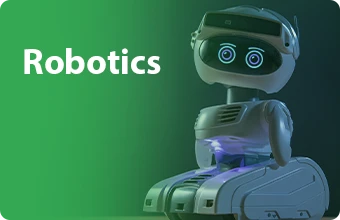Internet of things (IoT)
The Internet of Things (IoT) refers to the network of interconnected physical devices that communicate and exchange data with each other through the internet. These devices, often embedded with sensors, actuators, and communication hardware, can collect and share data, enabling them to be monitored, controlled, and remotely accessed.

Boost your IoT expertise with our complete IoT Development course! Furthermore, gain the knowledge and hands-on skills to create innovative, connected solutions using the latest IoT technologies. In addition, join Advanced iot course training institute in Kerala, java, python and more to ultimately become a master of this game-changing field.
The Internet of Things (IoT) is a concept that refers to the interconnection of everyday physical devices to the internet, allowing to send and receive data These devices, often embedded with sensors, software, and other technologies, can collect and exchange information with each other, as well as with central systems. The goal of IoT is to enable these “smart” devices to monitor, control, and interact the surrounding environment, of automation, efficiency, and convenience.
- Devices and Things:
- IoT devices can include a wide range of physical objects, such as sensors, cameras, appliances, vehicles, wearable devices, and more.
- These devices are equipp with connectivity features (such as Wi-Fi, Bluetooth, or cellular) that allow them to communicate with each other and with central systems.
- Sensors and Actuators:
- Sensors collect data from the environment, such as temperature, humidity, motion, and more.
- Actuators are components that can perform actions based on data received, such as turning on/off, adjusting settings, or triggering other physical responses.
- Connectivity:
- IoT devices use various communication protocols and technologies to connect to the internet and share data. Common protocols include MQTT, CoAP, HTTP, and others.
- Connectivity options can include Wi-Fi, Bluetooth, Zigbee, cellular networks, and Low-Power Wide-Area Networks (LPWAN).
- Data Processing and Analytics:
- The collected data is often sent to centralized cloud platforms for storage, processing, and analysis.
- Big Data analytics and machine learning techniques are frequently employed to derive meaningful insights from the vast amount of data generated by IoT devices.
- Cloud Computing:
- Cloud platforms play a crucial role in IoT by providing scalable and centralized storage, computing power, and services for managing and analyzing data from distributed devices.
- Edge Computing:
- In some IoT applications, data processing is performed closer to the source rather than in a centralized cloud. Edge computing helps reduce latency and bandwidth usage.
- Security:
- IoT security is a significant concern due to the large number of devices potential andvulnerabilities. Security measures include encryption, authentication, secure boot, and regular software updates.
- Standards and Protocols:
- Various standardization bodies and alliances work on defining protocols and standards to ensure interoperability and security in the IoT ecosystem. Examples include the Industrial Internet Consortium (IIC) and the Open Connectivity Foundation (OCF).
- Applications of IoT:
- IoT finds applications in various domains, including smart homes, healthcare (e.g., remote patient monitoring), agriculture (precision farming), industrial automation (Industry 4.0), smart cities, transportation, and more.
- Challenges:
- Challenges in IoT implementation include data privacy concerns, interoperability issues, security threats, and the need for power-efficient and cost-effective devices.
- 5G and IoT:
- The deployment of 5G networks enhances IoT capabilities by providing higher data transfer speeds, lower latency, and increased device density.
Don’t miss the opportunity to shape the future of technology. Consequently, join Advanced iot course training institute in Kerala java python and gain the essential skills to design, build, and deploy cutting-edge IoT solutions that will revolutionize industries and improve lives. Ultimately, secure your place in the forefront of innovation – therefore, enroll today and become an IoT expert!
You May Like
Our thoughtfully designed internship programs provide a tailored and enriching experience for aspiring professionals.

































